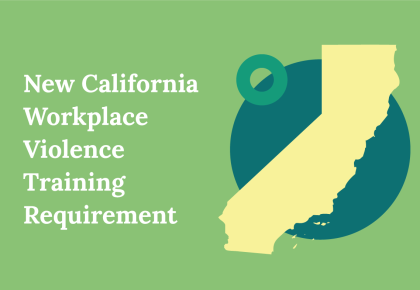An Upset Visitor in the Workplace
Dealing with an Angry Customer: What should you do?
Problem
Whether it’s a disgruntled client, an ill patient, an upset customer, or a vendor or business partner experiencing a personal crisis, knowing how to effectively diffuse tensions is crucial for maintaining professionalism and ensuring a safe environment for everyone involved. Let’s examine strategies for handling an angry visitor in the workplace to prevent the situation from potentially escalating to violence.
Solution
It’s essential to approach the situation with empathy and understanding. Acknowledge the other person’s feelings and validate their concerns, even if you may not agree with them. By demonstrating empathy, you establish a foundation of trust and open communication, which is key to resolving the issue peacefully.
Maintain a calm and composed demeanor, regardless of the other person’s behavior. Avoid escalating the situation by matching their level of anger or aggression. Instead, speak in a calm and respectful tone, and use nonconfrontational body language to convey a sense of openness and receptiveness. For example, instead of clinching your fists or crossing your arms, keep your hands and arms relaxed and at your sides.
Allow them to express their grievances without interruption and listen attentively to understand the root cause of their frustration. Reflect back their concerns to show that you are genuinely listening and empathizing with their perspective.
Once you have a clear understanding of the person’s concerns, offer solutions or alternatives to address their issues. This may involve consulting with a supervisor, offering a refund or replacement, or providing additional assistance to resolve the problem. By proactively seeking solutions, you demonstrate your commitment to resolving the issue and satisfying the visitor’s needs.
It’s also important to set boundaries and maintain a safe environment for everyone in the workplace. If the person’s behavior becomes threatening or aggressive, calmly but firmly assert your boundaries and communicate that such behavior is not acceptable. If necessary, seek assistance from a manager, security personnel, or law enforcement to ensure the safety of everyone involved.
In some cases, de-escalating tensions may require the help of a third party, such as a mediator or conflict resolution specialist. These trained professionals can help facilitate a productive dialogue and find mutually acceptable solutions to the problem.
Proactive Measures
After the situation has been resolved, take proactive steps to prevent similar incidents in the future. This may involve implementing additional training for staff members on conflict resolution and customer service skills, establishing clear protocols for handling difficult situations, and regularly reviewing and updating security procedures and violence prevention training.
Increased Focus on Training
Mandatory workplace violence prevention training is mandatory for most employers in California due to the enactment of Senate Bill 553. With increased threats to frontline workers, more organizations seek training to help reduce and address the potential for workplace violence.
In response to this growing need, worked with legal counsel to create a workplace violence prevention course. It details the warning signs of each type of violence and positive and safe bystander intervention and de-escalation techniques.
Contact us today to preview the course and learn how it can help your organization address workplace safety in a positive, proactive manner.
Resources
- California Workplace Violence: A Primer for Compliance with SB 553
- New California Workplace Violence Training Requirement Goes into Effect in 2024
- U.S. Mandatory Harassment Training
- Harassment Training Requirements by State
- Workplace Violence Prevention Training for California Employees
- Employment Law and Harassment Training


